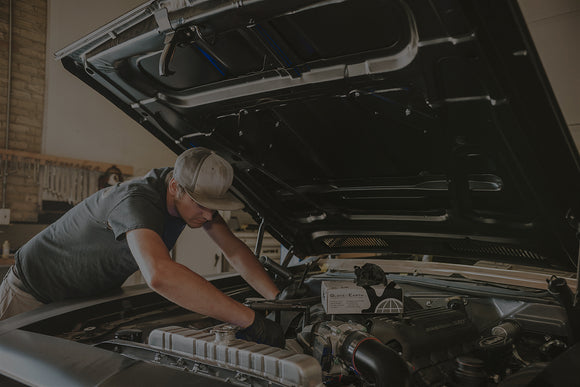
When is it Time for a Brake Line Repair?

Most people think about the components that make up the braking system in their cars and they think about the parts that receive the most wear: the brake calipers, pads, et cetera. These parts come packaged with systems that warn you when your parts need servicing; for example brake pads often have wear sensors that issue a constant chirping when you touch the brake pedal until you replace them. Brake rotors pulsate during braking or visually indicate wear by thinning out. Brake hoses harden, crack and sometimes leak… the list goes on.
Other components such as the brake lines are not considered to be wear parts but deteriorate all the same. The difference is that brake lines don't chirp when they're wearing out.
While modern hydraulic braking systems provide redundancy circuits, a failing brake line is rarely just a leak. When a line fails it usually breaches catastrophically, so it's important to periodically check the brake lines for signs of deterioration.
Start a brake line check by raising your vehicle to get a look at the underside. With the vehicle safely raised and supported, you can start inspecting your brake lines by checking how the brake lines and hoses look. Look for dark stains from dried brake fluid or wetness on or around the lines from actively leaking brake fluid. The brake fluid level in the master cylinder reservoir can also provide clues; the reservoir level will naturally fall evenly as the brake friction material wears, but a sudden drop in the reservoir fluid level generally indicates a fluid leak.
Even if a leak isn't immediately noticeable, most factory brake lines are made of plated steel which frequently rusts out where they come into contact with the mounting clips. These clips are where the lines are fastened to the chassis, suspension, and so forth. If you find rust or suspect rust is eating at the line, or even if you live in the “rust belt” states where lots of road salt is used, pop the lines out of their body clips and look carefully for corrosion. A little surface rust is alright, but if there is notable deep pitting it’s time to replace your brake line!
If the whole brake line looks rusty, or it’s plainly difficult to tell how extensively rust has eroded the brake line, you can use a pair of pliers to gently squeeze the line in areas where you suspect rust has weakened the structure of the tubing. Squeeze along the line surface but do so carefully so as not to disturb the plating. A brake line should never feel soft under light hand pressure from squeezing. A soft brake line lives on borrowed time and the a brake line repair should happen right away before operating the vehicle!
Check your brake lines periodically for corrosion and so you never have to worry about a brake line giving out while you're on the road. If you ever find that your brake lines are in need of a brake line replacement, 4LTL has a few other articles on the site that can help you determine what kind of brake line material to use as a replacement and how to do some of the necessary flaring to fit a new line in. This will give you a great idea on replacement cost. Until then, stay safe, and take good care of your vehicle!
Did you enjoy reading our blog? If so, let us know by using promo code: BLOG10 at checkout and get 10% off of your order!
Best of luck on your next project,
The 4LTL team

